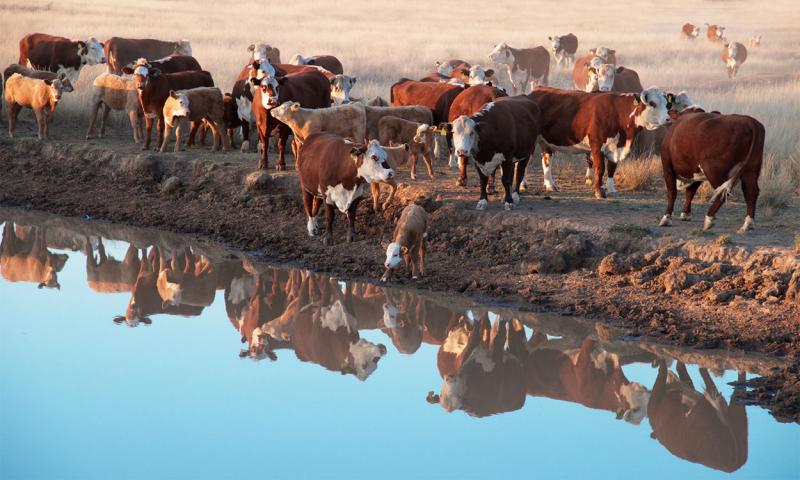
Hot summer days are still ahead, and we need to account for water. We all know water is the most-important nutrient to the animal, but we are always concerned about protein, energy, minerals and vitamins; even though water is required for regulation of body temperature, digestion, absorption of nutrients, waste removal, fetal growth and lactation. All the grass in world means nothing without water.
The amount of water a cow requires varies depending on environmental temperature, lactation status, weight, etc. During the heat of the summer (90 Degrees Fahrenheit) data suggests a lactating cow needs two gallons of water per 100-pounds of body weight. If we use the rule of two gallons per 100-pounds of body weight, a spring calving cow (1300-pound body weight), would require approximately 26 gallons plus another five to 10 gallons for the calf. How many consider the need of the calf? Can the calf reach the tank? How many provide enough access for both cows and calves? Providing a tank for calves only is a good management practice. A tank set to the side, filled by the overflow from the cow tank, allows for the calves to drink at the same time as the cows. When we consider non-lactating cows and bulls, they require one gallon per 100-pounds of body weight.
What is the space requirement? In larger pastures a rule-of-thumb is to have enough water and space to provide enough tank space for 10% of the herd. Allow 12 inches of perimeter for circular tanks and 18 inches for straight-side tanks per animal. Contact your local U.S. Department of Agriculture Natural Resources Conservation Service (USDA NRCS) office to help design a watering system.
Also, during late-summer, the appearance of blue-green algae increases in stagnant water. Blue-green algae is toxic to all classes of cattle. Be watchful for colonies of blue-green algae that appear as blueish green scum at or below the water surface. Different than other algae, blue-green algae does not appear as a mat, but stays dispersed in the water and moves freely with the wind. When looked at closely, blue-green algae appear as fine grains of green sand or grass clippings. Not all blue-green algae is blue-green, but it can also appear as red. More information about blue green algae can be found in the article, Blue-Green Algae and Livestock.


